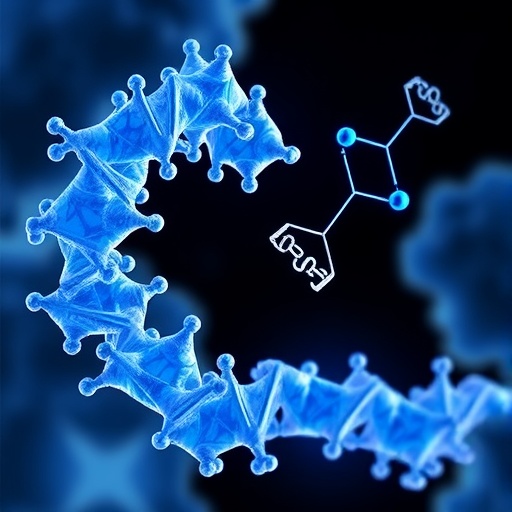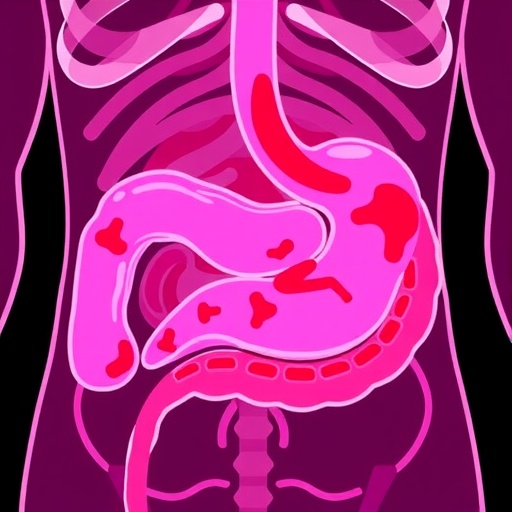
In a groundbreaking study that merges the capabilities of machine learning with the field of medicinal chemistry, researchers have embarked on a quest to develop and validate topoisomerase I inhibitors, a class of compounds known for their significant role in cancer therapy. Topoisomerase I, an essential enzyme in the DNA replication process, presents a strategic target for chemotherapeutic intervention due to its pivotal involvement in DNA topology. By employing sophisticated machine learning techniques, this research aims not only to enhance the design phase of these inhibitors but also to streamline the screening and validation processes, which traditionally involve extensive experimental work.
The emergence of machine learning in drug discovery marks a significant paradigm shift. This technology harnesses large datasets and employs algorithmic predictive models to identify potential drug candidates with remarkable efficiency. In the context of topoisomerase I inhibitors, the researchers aimed to create a predictive framework that could accurately foresee the efficacy and safety of novel compounds before they enter the labor-intensive and costly phases of laboratory testing. The potential to significantly reduce time and resources in drug development processes could revolutionize the pharmaceutical landscape.
In their research, Zhang and colleagues have meticulously curated a dataset comprising chemical structures of previously known topoisomerase I inhibitors. This dataset served as the foundation for training machine learning models, which were designed to learn the underlying patterns that correlate chemical structure with biological activity. Various machine learning algorithms, such as decision trees, random forests, and support vector machines, were tested for their predictive capabilities, enabling the scientists to identify the most effective model for their purposes.
The unique aspect of this study is the integration of feature engineering in the machine learning pipeline. The researchers delved deeper into the chemical properties that influence biological activity, considering factors such as molecular weight, lipophilicity, and structural complexity. By enhancing the algorithm’s ability to discern these features, the study aims to create more robust predictive models that can offer insights not only into potential inhibitors but also into their mechanisms of action at the molecular level.
An equally intriguing component of the research is the validation of predictions made by the machine learning models. In this phase, the identified candidates were subjected to a series of in vitro assays to assess their inhibitory activity against topoisomerase I. This step is crucial, as it bridges the gap between the computational predictions and the real-world biological responses. The success of this validation process would uphold the reliability of machine learning as a transformative tool in drug design.
The outcomes of these in vitro validations will provide essential feedback for refining the machine learning models further. If the predictive accuracy is confirmed, the process could create a self-improving loop where validated compounds lead to better predictions for future candidates. This iterative approach exemplifies the synergy between artificial intelligence and traditional pharmacological methods, opening new avenues for rapid drug development cycles that previously took years, if not decades, to yield results.
Moreover, the implications of this research extend beyond oncology. The methodologies and machine learning frameworks developed in this study could be adapted for drug discovery in various therapeutic areas, ranging from infectious diseases to neurodegenerative disorders. By setting a precedent for the use of AI in small molecule drug discovery, this work could inspire a plethora of future research endeavors across multiple disciplines.
The potential societal impact of these developments is substantial. As effective therapies against cancer become more accessible due to lowered development times and costs, patient outcomes could improve dramatically. Moreover, the deployment of AI and machine learning in drug discovery could democratize access to advanced therapeutics in developing regions, thereby addressing global health disparities that plague many parts of the world.
In summary, the study not only paves the way for accelerated drug discovery processes but also reinforces the increasingly indispensable role of machine learning in modern pharmacology. This research demonstrates that, when harnessed correctly, technology can significantly enhance human ingenuity in healthcare, propelling the field forward in ways previously deemed unattainable. The anticipation surrounding the future results of this research cannot be overstated, as it promises to redefine norms in both medicinal chemistry and cancer treatment paradigms.
Researchers like Zhang, Tong, and Li are at the forefront of a new era, one in which the fusion of computational power and biological understanding can yield results that significantly improve human health. The journey from molecular design to clinical application, once a challenging and lengthy endeavor, might soon be streamlined through the integration of these advanced technologies. Indeed, as machine learning continues to mature, the horizons for future discoveries in drug development appear limitless.
This innovative approach to developing topoisomerase I inhibitors not only emphasizes the importance of interdisciplinary collaboration but also signals a crucial turning point in how we approach complex biological problems. It challenges the scientific community to rethink traditional methodologies and embrace the potential of artificial intelligence to enhance human creativity and scientific insight.
Thus, the interplay between machine learning and drug discovery will undeniably shape the future of medicine. As we stand on the cusp of this transformation, it is essential to support and invest in such research initiatives that promise to break boundaries and finally provide the treatments that patients have long awaited.
Building upon the lessons of this study, the conversation surrounding machine learning in pharmacology will undoubtedly gain momentum. The case for integrating AI in drug discovery—with lessons learned from the validation, refining, and eventual success of topoisomerase I inhibitors—will serve as a beacon for researchers worldwide. The anticipation surrounding the results of this ongoing work not only excites the scientific community but also offers a glimpse of hope for those affected by the diseases targeted by these novel therapies.
In conclusion, the study of Zhang et al. heralds a promising future for the intersection of machine learning and medicinal chemistry. Their work has the potential to underscore a new era where computational models do not replace but rather enhance human capabilities in drug development, ultimately leading to transformative therapies for cancer and beyond. The stakes have never been higher, and the prospect of seeing these predictions come to fruition excites both researchers and patients alike.
Subject of Research: Machine learning-based design and validation of topoisomerase I inhibitors.
Article Title: Machine learning-based design, screening, and activity validation of topoisomerase I inhibitors.
Article References:
Zhang, YK., Tong, JB., Li, JL. et al. Machine learning-based design, screening, and activity validation of topoisomerase I inhibitors.
Mol Divers (2025). https://doi.org/10.1007/s11030-025-11295-3
Image Credits: AI Generated
DOI: 10.1007/s11030-025-11295-3
Keywords: machine learning, topoisomerase I inhibitors, drug discovery, predictive modeling, cancer therapy
Tags: AI-driven drug discoveryalgorithmic drug candidate identificationcancer therapy innovationsDNA replication and topologyefficient compound screening techniquesmachine learning in medicinal chemistrymedicinal chemistry advancementspharmaceutical research transformationpredictive modeling in pharmacologyreducing drug development coststopoisomerase I inhibitors developmentvalidation of chemotherapeutic agents




